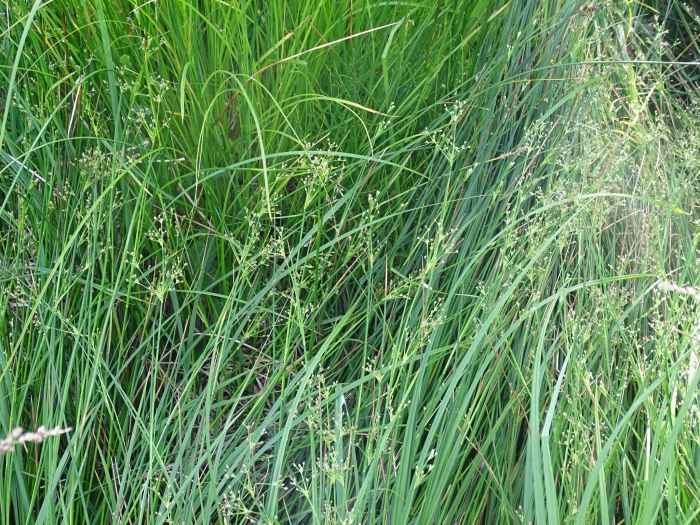Blunt-Flowered Rush
(Juncus subnodulosus)
Blunt-Flowered Rush (Juncus subnodulosus)
/
/

Christian Berg
CC BY 4.0
Image By:
Christian Berg
Recorded By:
Copyright:
CC BY 4.0
Copyright Notice:
Photo by: Christian Berg | License Type: CC BY 4.0 | License URL: http://creativecommons.org/licenses/by/4.0/ | Rights Holder: Christian Berg | Publisher: iNaturalist | Date Created: 2020-07-06T16:21:09-07:00 |
























Estimated Native Range
Summary
Juncus subnodulosus, commonly known as Blunt-flowered Rush, is a perennial herbaceous plant native to a variety of wetland habitats including fens, marshes, and the edges of ponds and streams across temperate Europe, extending into the Mediterranean region. It is not typically found in the colder climates of far Scandinavia. This rush can reach heights of 20-80 cm, with a clumping growth habit. It features green cylindrical stems topped with clusters of small, greenish-brown flowers that bloom from June to August. The flowers are not particularly showy, but they do add a subtle texture to wetland plantings.
Blunt-flowered Rush is valued for its ability to thrive in wet conditions and is often used in the restoration of wetland areas, as well as in water gardens and naturalistic plantings. It is tolerant of a range of soil types, provided they are consistently moist or wet, and can grow in both full sun and partial shade. This species is also an important component of the Juncus subnodulosus-Cirsium palustre fen-meadow ecosystem, a habitat type that is significant for biodiversity in Western Europe. While it is not known for significant problems with diseases or pests, care should be taken when planting outside its native range as it can become invasive in some regions, such as New Zealand and North America.CC BY-SA 4.0
Blunt-flowered Rush is valued for its ability to thrive in wet conditions and is often used in the restoration of wetland areas, as well as in water gardens and naturalistic plantings. It is tolerant of a range of soil types, provided they are consistently moist or wet, and can grow in both full sun and partial shade. This species is also an important component of the Juncus subnodulosus-Cirsium palustre fen-meadow ecosystem, a habitat type that is significant for biodiversity in Western Europe. While it is not known for significant problems with diseases or pests, care should be taken when planting outside its native range as it can become invasive in some regions, such as New Zealand and North America.CC BY-SA 4.0
Plant Description
- Plant Type: Grass
- Height: 2-3 feet
- Width: 1-2 feet
- Growth Rate: Moderate
- Flower Color: N/A
- Flowering Season: Summer
- Leaf Retention: Deciduous
Growth Requirements
- Sun: Full Sun, Part Shade
- Water: High
- Drainage: Standing, Slow, Medium
Common Uses
Erosion Control, Low Maintenance, Water Garden
Natural Habitat
Native to a variety of wetland habitats including fens, marshes, and the edges of ponds and streams across temperate Europe and into the Mediterranean region
Other Names
Common Names: Stumpfblütige Binse, Heath Rush
Scientific Names: , Juncus subnodulosus, Juncus alpinus var. erectus, Juncus articulatus subsp. sylvaticus, Juncus articulatus subsp. sylvaticus, Juncus articulatus var. sylvaticus, Juncus bifolius, Juncus congestus, Juncus divaricatus, Juncus divaricatus
GBIF Accepted Name: